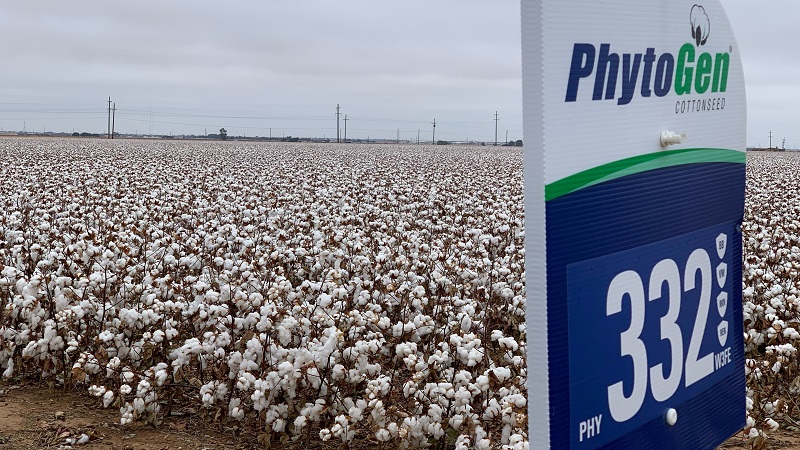Stagnant Demand Continues to Suppress Cotton Market
Certificated stocks are coming to the Board. So what? Who cares?
Better care!!
It means that someone believes the best market for cotton is the futures market delivery mechanism. If delivery against futures is the best market for stocks, then it means the cash market does not want/need cotton. Of significant importance is that stocks are being moved to a privately-owned warehouse as opposed to a merchant/cooperative warehouse.
Moving certificated stocks to a private warehouse implies that the stocks will, in fact, be delivered against futures contracts. It means the market is very weak.
Demand. Demand. Demand. Every week I commit to myself that I will not write about stagnant world cotton demand. I have worn out the subject. Every week it comes back to haunt the market – week after week.
The last two world supply demand reports have reduced both U.S. and world cotton production by a million bales respectfully, and prices have not changed. Yes, a few speculators have viewed this as bullish, looked at the price charts, and loaded up their buy orders, only to see prices fall back to the same ole price level we’ve seen since November 2022.
In its September world supply demand report, USDA dropped its estimate of the U.S. crop another 900,000 bales, now down to 13.1 million bales. The market thinks it may be as low as 12.6-12.8 million, and still the 88-90 cent price nut is just too hard to crack.
Saying again – without demand, a bullish market cannot exist. There is no buying to push prices higher.
We have written numerous time times that the market is trading in a price equilibrium cavity – mostly in a narrow 84-88 cent range within a bit wider 82-90 cent range. Mills continue to feel they can buy cotton below a New York quote of 82 cents while growers keep rolling the dice for a 90-cent price tick. Either trade can occur, but the grower has a better chance of seeing 90 cents than the textile mill does in seeing 82-83 cents.
The world’s second and fourth largest producers are set to harvest smaller than expected crops. The U.S. crop is three million bales lower than expected, and India is facing a crop as much one million bales smaller than expected. The U.S. – once the largest producer in the world – has been relegated to the fourth largest producer this year, falling behind Brazil for the first time.
Yet, while the U.S. cotton industry has suffered through two major droughts, year ending world cotton stocks have risen to 90 million bales, or about 78% of current demand. World ending stocks held by consuming countries exceeds those held by producing countries. World cotton trade is shrinking, a testament to declining demand.
The demise in cotton demand is directly correlated to the economic downturn of not only the U.S. economy and that of Europe, but now Chinese consumers are suffering many of the same economic woes of other consumers – inflation, high energy prices, increasing interest rates, and escalating food prices. Any increase in cotton demand sits on the back burner and will not likely see improvement until at least the second quarter of 2024. This suggests that cotton prices will continue to trade the 82-90 cent range.
USDA forecast the 2023 world production at 112.4 million bales, down from 118.7 in 2022. World consumption was forecast at 115.9, unchanged from 2021. World trade was decreased to 43.3 million bales – again, an indication of weak demand compared to earlier forecasts. World stocks will shrink this season, but only because production was dramatically reduced, not because of demand growth. Demand was estimated to have recovered from its pandemic level of 111 million bales, but only returning only to its 2021 level.
U.S production was forecast at 13.1 million bales, consumption was left unchanged at 2.1 million, and U.S. carryover was estimated to fall 100,000 bales, down to 3.0 million bales. With U.S. export share declining, the “historical” bullish relevance of U.S. carryover falling to 3.0 million bales does not carry the fundamental importance it once commanded. More importantly, the U.S. is also seeing a significant deterioration in its share of the export market, losing steadily to Brazil. The market share not lost to polyester is now being lost to Brazil.
Again, growers are advised to be aggressive sellers on any move above 87.50 and that such a price level should exist into the harvest season. However, any typical active market will back and fill on a weekly basis.
Additionally, growers are encouraged to investigate the marketing strategy of selling cotton at harvest and purchasing a three cent out-of-the-money July call option if they are bullish or optimistic that prices will move higher. The U.S. cotton grower should not pay storage costs.
Give a gift of cotton today.









